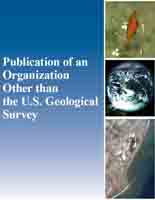Scanning electron microscopic evaluation of broad ion beam milling effects to sedimentary organic matter: Sputter-induced artifacts or naturally occurring porosity?
Links
- More information: Publisher Index Page (via DOI)
- Open Access Version: Publisher Index Page
- Download citation as: RIS | Dublin Core
Abstract
Research examining organic-matter hosted porosity has significantly increased during the last decade due to greater focus on understanding hydrocarbon migration and storage in source-rock reservoirs, and technological advances in scanning electron microscopy (SEM) capabilities. The examination of nanometer-scale organic-matter hosted porosity by SEM requires the preparation of exceptionally flat geologic samples beyond the abilities of traditional mechanical polishing, which can deform or otherwise obscure organic surfaces. To meet this demand, broad ion beam (BIB) milling was introduced as a sample preparation technique for SEM petrographic analysis of geologic samples. As with any sample preparation technique, there can be unintended consequences. In this study, we examined the development of nanometer-scale sputter-induced voids caused by BIB milling of thermoset plastic binder material [poly(methyl methacrylate), PMMA] used for the mounting of geologic samples, and artifact sputter-induced voids in the organic matter of Green River Formation and Kimmeridge Clay Formation source rocks. Development of artifact sputter-induced voids was evaluated in relation to variations in the slope of the sample examination surface (0.0–4.9% slope), effectively varying the angle of ion incidence. The results indicate that only minor variations in the angle of ion incidence can generate sputter-induced voids in both PMMA (10.0–386.2 nm diameter sputter-induced voids) and sample sedimentary organic matter (solid bitumen; 12.2–103.6 nm diameter sputter-induced voids). Overall, average artifact pore diameters increased with increasing ion incidence angle within PMMA. Although sputter-induced voids within solid bitumen in the Green River Formation sample were only found in limited extent, the size of these void artifacts falls within the same size range as naturally occurring meso-macroporosity. That is, the pore-like artifacts could easily be misconstrued as naturally developed organic porosity, which is a major concern for SEM-based porosity evaluation methods. This study describes the factors that contribute to the creation of artifact sputter-induced voids, their distinguishing characteristics, and best practices for avoiding the creation of ion-induced artifacts.
| Publication type | Article |
|---|---|
| Publication Subtype | Journal Article |
| Title | Scanning electron microscopic evaluation of broad ion beam milling effects to sedimentary organic matter: Sputter-induced artifacts or naturally occurring porosity? |
| Series title | International Journal of Coal Geology |
| DOI | 10.1016/j.coal.2023.104348 |
| Volume | 277 |
| Year Published | 2023 |
| Language | English |
| Publisher | Elsevier |
| Contributing office(s) | Eastern Energy Resources Science Center, Geology, Energy & Minerals Science Center |
| Description | 104348, 12 p. |


